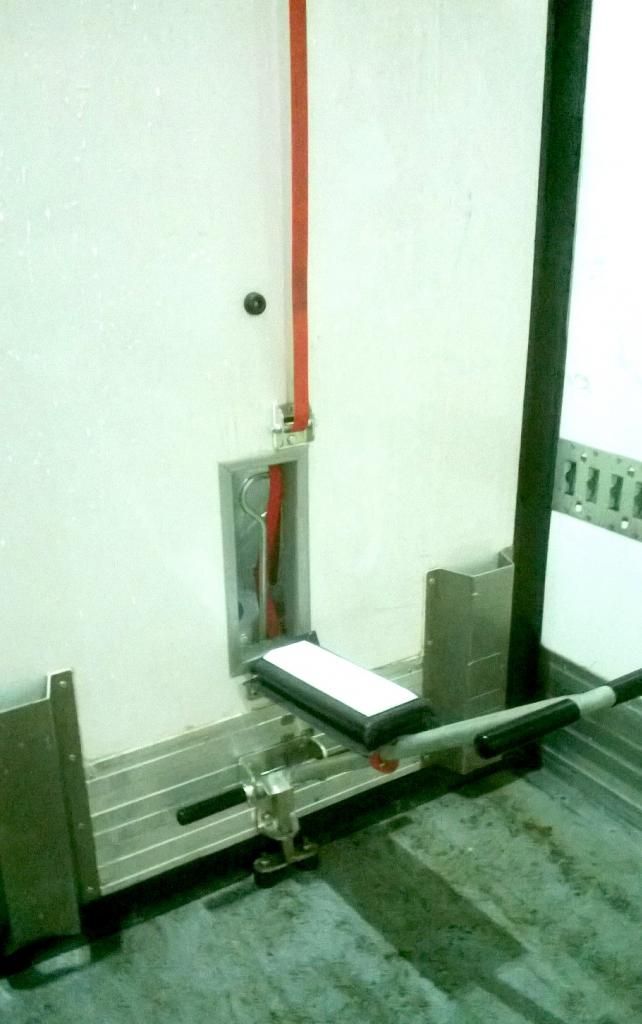Since reading this thread I’ve paid attention to passing fridges and my highly scientific studies lead me to conclude that it’s predominantly (but not exclusively) foreign fridges that have these small flaps. I certainly have never pulled a fridge with one but after spending much time standing on the rear under run at a 45 degree angle trying to get the bloody things open I can see merit in the vacuum argument.
My problem with the vacuum argument is that there is already a standard fitting used in most commercial/industrial cold-stores to avoid this problem - something like this: loheat.com/products-pressure … valves.htm
Not sure why fridge trailers wouldn’t have something like this - it could even be built into the fridge unit, where it could be designed to avoid freezing-up (land-based ones have electric heaters). Given that the aim of these valves is to avoid the box being destroyed, you wouldn’t think that a little door which might be open or shut would be a good alternative.
I go for the ‘ventilating the product’ theory.
Schmitz Cargobull call them ventilation flaps, and they are optional extras.
On tankers we would talk about venting the barrel, so ventilation can prevent a vacuum and can possibly freshen the smell. However if that is the only reason, why do they not fit an airscoop like those fitted to a teenagers Vauxhall?

Imo there’s a hell of a lot of cubic meterage of “smelly” air in yer standard fridge, and as such I’d question the logic of having only one small flap on the back door of all places. Surely if ventilation was the aim it would make sense to have one either end to speed through airflow?
This topic came up half a dozen years ago, and no-one had a definite answer then either!
viewtopic.php?f=2&t=27037
From what I’ve observed on the road here in France it seems that rear door vents are particularly favoured by the Spanish/Portuguese, and I seem to recall something about them being used to vent oranges or onions in transit (I’m no expert in produce transport out of Iberia so someone else may correct that detail). Our firm only has the flaps fitted on the inside sliding bulkhead, linked to the handle. It makes a huge difference to the effort required when opening or shutting the bulkhead, especially in its forwardmost position.
In reality there are probably several reasons behind the fitting of fridge vents, although I’m certain that using them to take the box temperature isn’t one of them.
~ Craig
Could it not be to stop mould etc forming when the fridge unit is parked up (for a few days) and the fridge not running. Just the same as you’d leave a domestic fridge door slightly ajar if you weren’t using it.
Cat Flap?
Tuphead:
Rat Flap?
FTFY
Based on the state of some of the fridge trailers I’ve seen since being on fridges.
I didn’t realise you could back load muck in a fridge
They are for little people
Why doesn’t someone fire a quick email to Schmitz I’m sure they would give you a definite answer.
Well we use the flaps to dry out the trailer after it’s been washed. With the flaps open it takes about ½h of driving before the hole trailer is dry. Without no matter how long you would be driving it wont dry out, you have to leave it with the doors open and just sit and wait. Also driving fresh fish the smell won’t disappear even after a wash so the ventilation also helps there.
Flaps were common in the 90s but some frc regulation forbid them mid 00. The law has changed and they are now legal again.
Icee:
Flaps were common in the 90s but some frc regulation forbid them mid 00. The law has changed and they are now legal again.
Cite?
Santa:
Icee:
Flaps were common in the 90s but some frc regulation forbid them mid 00. The law has changed and they are now legal again.Cite?
Feel free to look through the ATP regulations for FRC and FNA, I can’t be bothered to search for it.
